We use P-wave velocity records at the Virtual European Broadband Seismic Network (VEBSN), filtered between 0.5 and 1.0 Hz and between 1.0 and 4.0 Hz.
Signals are realigned according to theoretical arrival time from the
USGS epicenter,
using multichannel cross-correlation – see Trace alignment.
We use the back projection method described in
Satriano et al. (2012).
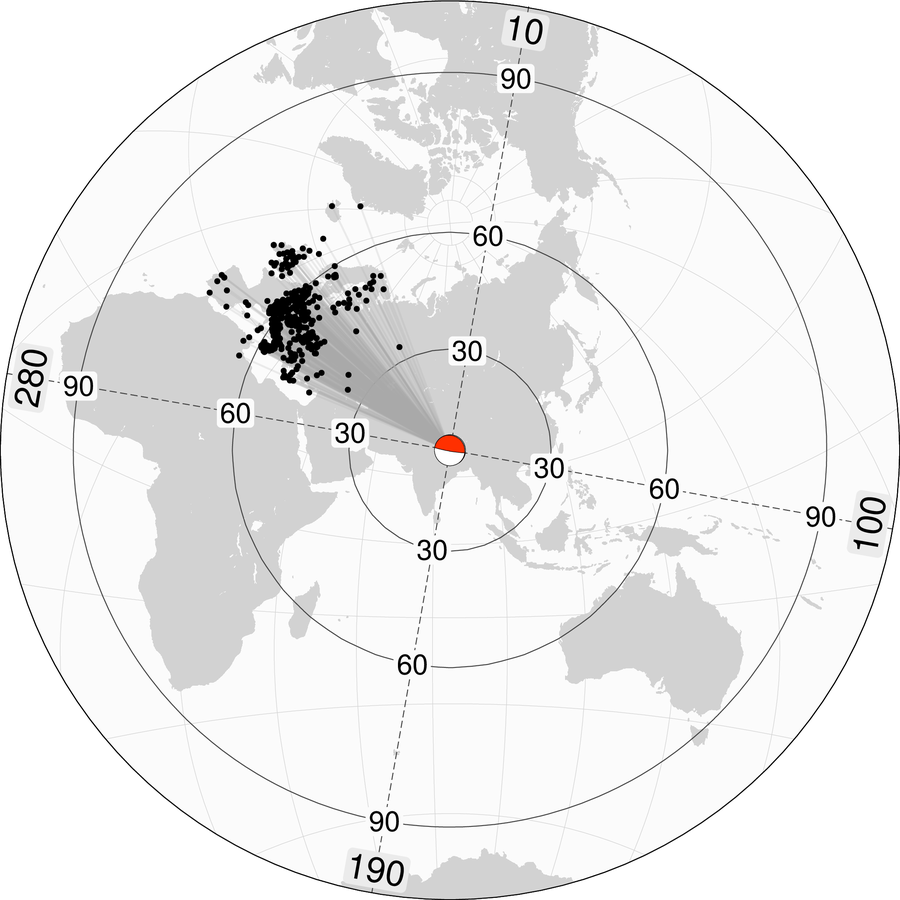
Back projection resolution is estimated by the array response function (ARF), computed at the lowest
frequency of the band (0.5 and 1.0 Hz).
The ARF allows to correctly evaluate the beam power images obtained from the back projection analysis.
For back projection imaging we use a linear trace stack weighted by trace semblance.
Semblance-weighted linear stack shows unilateral rupturing to the east of the epicenter.
We extract over time local maxima of back projection beam power.
These back projection peaks are locations of high-frequency (~0.5 and ~1.0 Hz) coherent energy emitters.
For semblance-weighted linear stack, the circle amplitude is mostly related to the actual signal energy
(with some weighting based on coherency).
Rupture propagates unilaterlay to the east.
High-frequency emission is to the north of the aftershock area (downdip limit of the coupled interface?).
Energy emission is stronger at later stages of the rupture (see also
Energy time function and
Trace alignment).
The last coherent source appears at ~95 km east of the epicenter.
Back projection peaks @0.5-1.0Hz
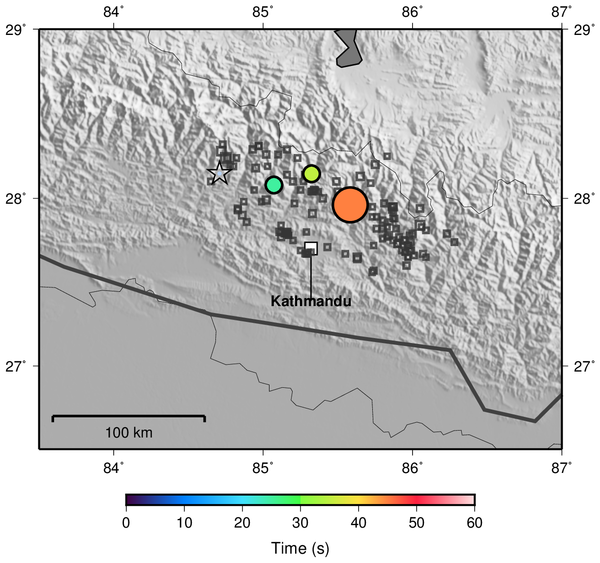
Back projection peaks - Linear stack, semblance weight @0.5-1.0Hz
|
Back projection peaks @1.0-4.0Hz
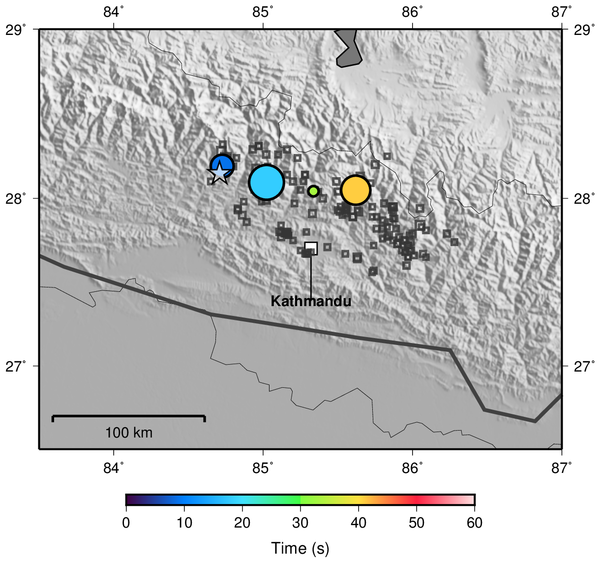
Back projection peaks - Linear stack, semblance weight @1.0-4.0Hz
|
Projected peaks along-strike show coherent sources activating to the east at increasing time
with apparent velocity of ~2.0 km/s. Along-dip source position doesn't change significantly with time.
We look at coherent energy release as a function of time by integrating back projection
beam power on space at every time step.
Energy release between 0.5 and 1.0 Hz is stronger at later stages of the rupture.
Energy release between 1.0 and 4.0 Hz has strong peaks at 9, 18 and 41s.
Energy time function @0.5-1.0 Hz
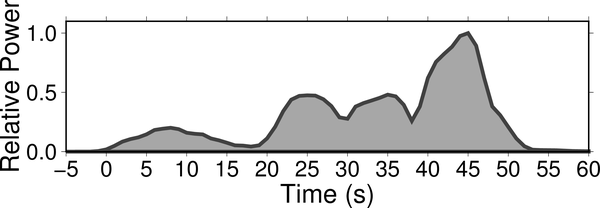
Energy time function - Linear stack, semblance weight @0.5-1.0 Hz
|
Energy time function @1.0-4.0 Hz
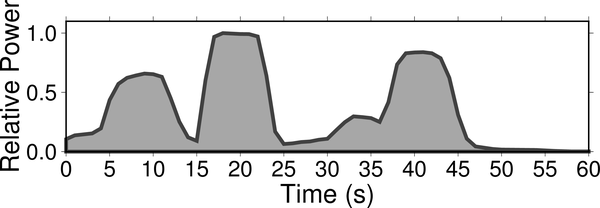
Energy time function - Linear stack, semblance weight @1.0-4.0 Hz
|
Trace filtered between 0.5 and 1.0 Hz show stronger energy release at later stages of the rupture.
Trace filtered between 1.0 and 4.0 Hz show at least three "sub-events" (0, 9, 18s) with increasing
energy and a last coherent source at 41s (stopping phase?).
Trace alignment @0.5-1.0 Hz
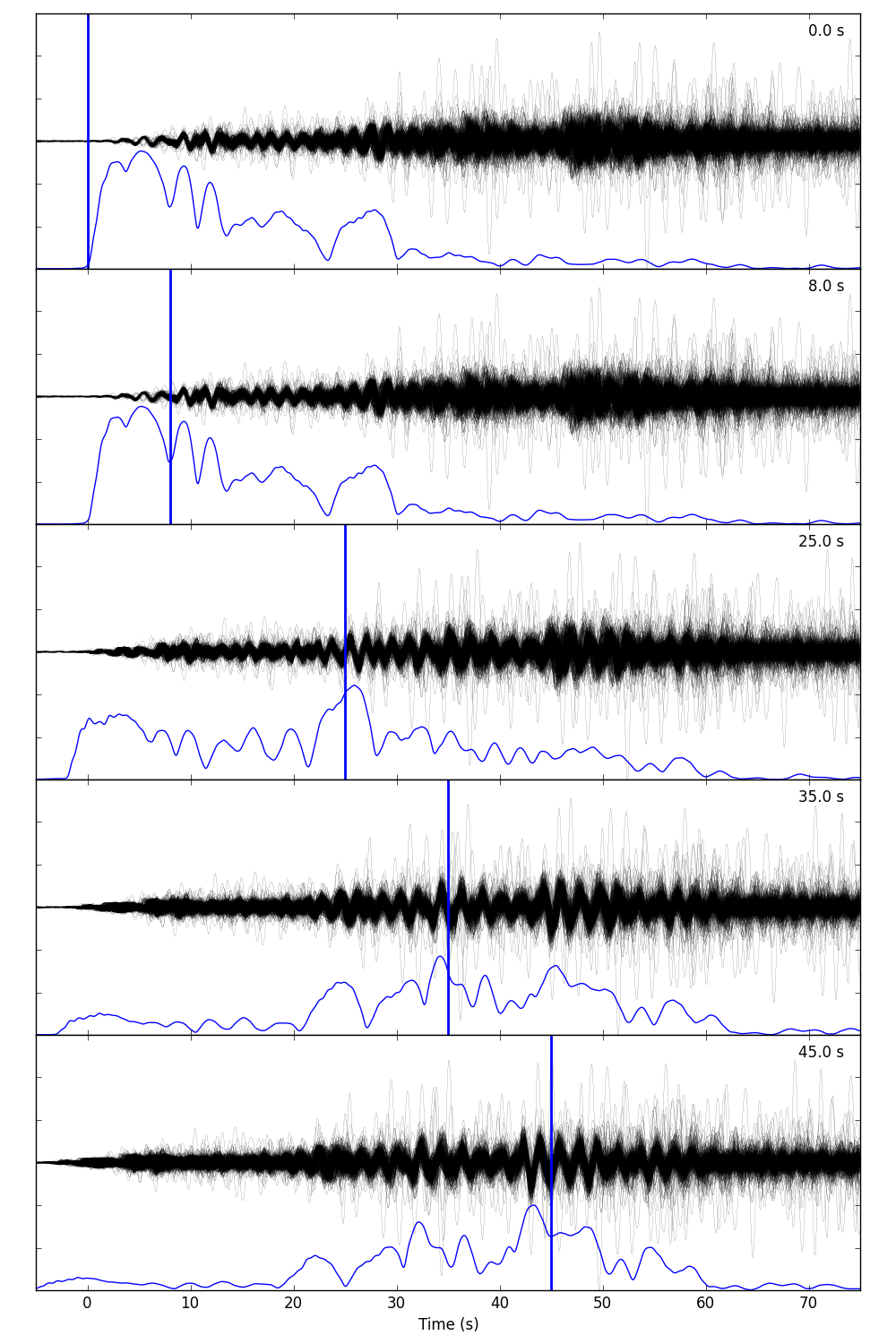
Trace alignment - Linear stack, semblance weight @0.5-1.0Hz
|
Trace alignment @1.0-4.0 Hz
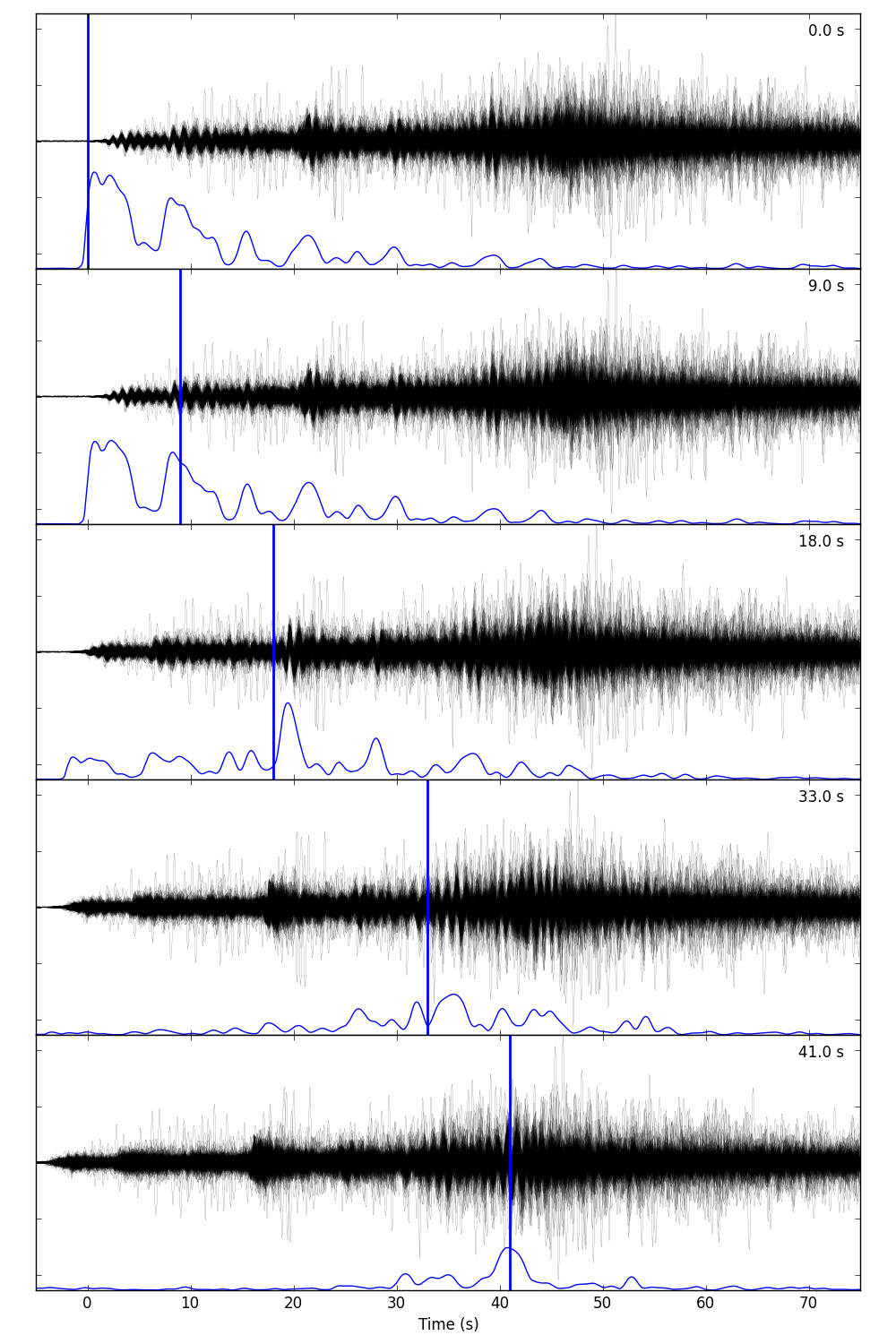
Trace alignment - Linear stack, semblance weight @1.0-4.0Hz
|
C. Satriano, E. Kiraly, P. Bernard, J.-P. Vilotte (2012). The 2012 Mw 8.6 Sumatra earthquake: evidence of westward sequential seismic ruptures associated to the reactivation of a N-S ocean fabric, Geophys. Res. Lett., 39(15), L15302, doi 10.1029/2012GL052387.
Last update: Tue Jul 1 16:39:08 CEST 2025
Log in